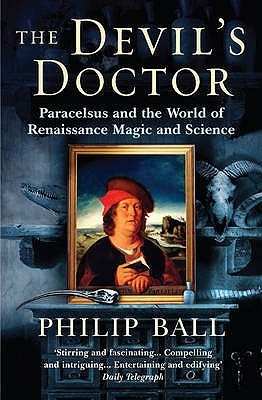The Devil's Doctor: Paracelsus and the World of Renaissance Magic and Science
Title: The Devil's Doctor: Paracelsus and the World of Renaissance Magic and Science

Author: Philip Ball
Published in: 2006
Date read: 13th March 2012
Score: 4/5
Genre: History, Non-fiction, Biography
Plot: (Warning, may contain spoilers):
"The Devil's Doctor" by Philip Ball, published in 2006, is a non-fiction historical biography that delves into the fascinating and often controversial life and ideas of Paracelsus (born Philippus Aureolus Theophrastus Bombastus von Hohenheim), the influential and enigmatic physician, alchemist, and philosopher of the 16th century.
Ball's book aims to separate the real, complex figure of Paracelsus from the myths and legends that accumulated around him. Often portrayed as a revolutionary genius by his admirers or as a dangerous quack, charlatan, and "devil's doctor" by his detractors, Paracelsus was a truly transformative, if divisive, figure during a period of immense intellectual and religious upheaval in Europe.
The book explores Paracelsus's radical approaches to medicine, which challenged the long-held doctrines of ancient Greek physicians like Galen and Hippocrates, who had dominated medical thought for centuries. Paracelsus championed observation, experimentation, and a new understanding of disease rooted in chemistry rather than the traditional theory of humours. He famously argued that diseases had specific external causes and could be treated with specific chemical remedies, a revolutionary concept for his time. He pioneered the use of minerals and chemicals in medicine, laying some groundwork for pharmacology.
Ball also examines Paracelsus's deep involvement in alchemy and natural philosophy. For Paracelsus, alchemy was not just about transmuting lead into gold, but about understanding the hidden processes of nature, purifying substances, and extracting their essences for medicinal purposes. He believed in a holistic view of the cosmos, where man, nature, and the heavens were interconnected.
The biography covers his itinerant life, marked by constant travel, disputes with the medical establishment, and his often abrasive personality. He was a vocal critic of academic physicians, often engaging in public feuds. Ball portrays him as a figure caught between the medieval world of magic and the burgeoning scientific revolution, embodying both the mysticism and the empiricism of his era.
"The Devil's Doctor" paints a vivid portrait of a man who was both a visionary and a provocateur, whose ideas, though often dismissed in his time, profoundly influenced the development of modern chemistry and medicine, despite his mystical leanings and controversial methods.
Comments:
Although this book was hard work in the earlier parts, it was a brilliant book that I thoroughly enjoyed. I have since, lent it to some of my A-Level Chemistry students who are interested in medicine for inspiration prior to university applications and it always goes down well. This, like a few others, came about from my interest in the history of science.
Books that we've read by Philip Ball (1):
The Devil's Doctor: Paracelsus and the World of Renaissance Magic and Science (2006)
This page was updated on: 8th August 2025

